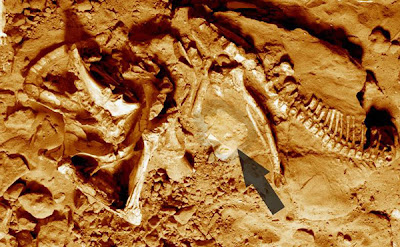 |
The Lehigh Mountain Hawk in 2008
photo credit: Erin Podolak |
If you’ve ever checked the About section of this blog, you’ll know that my alma mater is Lehigh University. I loved my time at Lehigh (it’s where I first learned about science writing) and thinking about the university evokes a lot of positive memories. But, as much as I love Lehigh, I have to admit it isn’t exactly a premier research institution (despite what they might tell you in the pamphlets). Not that research doesn’t go on at Lehigh, but it’s no University of Wisconsin-Madison as far as a reputation for cutting edge research is concerned.
Imagine my surprise as I was perusing Scientific American a few weeks ago when I stumbled upon Lehigh while reading an article (reprinted from ClimateWire) about a newly developed material that has the ability to pull carbon dioxide and methane pollution from other gases. The material was developed by Kai Landskron, Paritosh Mohanty and Lillian D. Kull of Lehigh’s department of chemistry, and could potentially be used to help capture greenhouse gases.
Creating carbon-sucking materials has been a goal for scientists for years as a way to combat the effects of climate change caused by an excess of greenhouse gases in the atmosphere. However, existing systems tend to be expensive, use a tremendous amount of energy, or don’t work well at high temperatures. The new material developed at Lehigh avoids these problems.
The new substance was created using chemicals called diaminobenzidine and hexachlorocyclotriphosphazene. These chemicals are cheaper than others used for carbon absorption, and can operate at heat as high as 400 degrees Celsius. In addition to avoiding the problems that have plagued early carbon capture systems the researchers also had to create something that could take carbon dioxide and methane out of a gas stream, but then release it at a later time for permanent storage underground once compressed.
 |
Coal power plant Somerset NY
Credit: Matthew D. Wilson/Wikimedia Commons. |
When they developed their “sponge” the researchers found that the material drew more carbon dioxide and methane from the air than other gases, like nitrogen. This makes the material idea for capturing harmful greenhouse gases out of mixed emissions. The researchers have suggested that the material could be placed inside a tower located adjacent to a coal burning power plant, the flue gas generated from the burning coal could then be transported via pipeline through the material to capture greenhouse gases from the emissions.
According to the researchers, the material has a 90% success rate capturing CO2 from a gas stream. However, some problems with the mass production of this material include the fact that real power plants would emit a more complex mixture of gases than was tested by the Lehigh research team, the material may be too dense for manufacture on a large enough scale, and production would create chemical byproducts that may become difficult to control.
The researchers are confident however, in the product they have created. Landskron told ClimateWire:
“There is no fundamental difference in doing this in the lab versus doing it at an industrial scale.” This material hasn’t been tested on a commercial scale and it remains unknown if it could actually be implemented practically, so we’ll have to wait and see if the material can stand up to the high expectations its creators have set up for it.
Even though the chemicals used in the material are cheaper than others used for carbon capture, the cost of producing and implementing the technology is still a barrier to its use. The researchers hoped to test the material on an existing coal plant in the US earlier this year, but the effort stalled due to a lack of funds, even with a 50% investment by the Department of Energy.
 |
On campus with friends before my graduation from
Lehigh in 2009. |
So, while the research is promising and it demonstrates an interesting idea with a lot of potential for carbon capture it needs support and further research to make it something that could actually be used commercially. If you’d like to know more, the research was published in July in Nature Communications.
I was excited to see Lehigh in the news for scientific research. Research wasn’t a big part of my life at Lehigh, in fact I rarely encountered it, but Lehigh is where my passion for science evolved into a career. It is where, with the support of the journalism department and the wonderful professors who gave me my first real introduction to writing, I realized that I could have a career dedicated to science without being a scientist, and that has shaped the course of my life. I’m proud of my school, and even prouder to know that Lehigh researchers are working to find solutions to our greenhouse gas problems. Now lets get some funding to make that research a reality!



